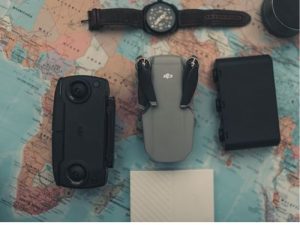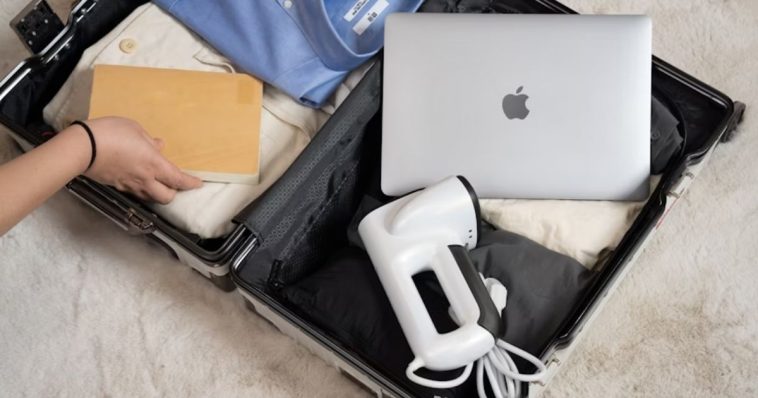Travel has evolved into a highly connected and technology-driven experience. Over the past decade, innovations have reshaped every stage of the journey—from trip planning to navigation in unfamiliar cities—making travel faster, more personalized, and increasingly immersive. Advancements in digital tools, AI, and smart devices continue to redefine how destinations are explored, ensuring more efficient and engaging experiences.
Top 9 Travel Tech Trends Making Trips Smarter

1. Planning and Booking Made Effortless
The digital revolution has transformed trip planning from a time-consuming chore into a streamlined, personalized experience. Online booking platforms, mobile apps, and AI-powered travel assistants now allow travelers to instantly compare flights, accommodations, and activities, often presenting options tailored to personal preferences or past travel behavior. These tools help uncover hidden gems—such as boutique hotels, local experiences, or off-the-beaten-path destinations—that might go unnoticed.
For example, Hopper utilizes AI to predict the optimal times to book flights, enabling travelers to save money. Meanwhile, platforms like Airbnb and Booking.com allow users to filter properties by amenities, eco-conscious practices, and unique experiences. Beyond convenience, technology empowers travelers to make informed decisions, reducing stress and creating a sense of control. Trip planning is no longer a guessing game; it’s a personalized, insightful, and enjoyable process that enables families, solo adventurers, or groups to design journeys tailored to their style and priorities.
Impact: By centralizing information and providing tailored recommendations, technology makes travel planning more accessible, efficient, and inspiring, transforming what was once a daunting task into an integral part of the adventure.
2. Navigation and Real-Time Guidance
Modern navigation tools have transformed movement through cities and landscapes. GPS, mapping applications, and AR technology provide turn-by-turn directions, real-time traffic updates, public transportation schedules, and pedestrian-friendly routes, allowing journeys to focus on exploration rather than orientation.
Augmented reality (AR) enhances navigation by overlaying directions, landmarks, and points of interest directly onto a smartphone or smart glasses camera. Applications like AR walking directions and transit guides simplify navigation through crowded urban centers, unfamiliar neighborhoods, and complex transport networks. These technologies improve efficiency, safety, and confidence, enabling optimal time use while exploring new areas.
Impact: Real-time navigation has made travel more intuitive, less stressful, and safer, facilitating seamless exploration of destinations, uncovering hidden locations, and full engagement with surroundings without reliance on physical maps or local guidance.
3. Enhancing the In-Transit Experience
Technology has transformed the journey, making the often-stressful in-transit travel phase smoother and more enjoyable. Mobile check-ins, digital boarding passes, and biometric security screening streamline airport and train station processes, reducing waiting times and alleviating the anxiety associated with travel logistics. Once onboard, travelers can enjoy high-speed Wi-Fi, personalized entertainment streaming, and real-time updates on delays, gate changes, and baggage status, turning transit time into productive or relaxing moments rather than wasted hours.
Airlines and rail operators are increasingly using AI chatbots and messaging apps to deliver personalized services—such as flight updates, baggage tracking, and customer support—directly to travelers’ devices. With access to e-books, movies, games, and social connectivity, even long journeys can become comfortable, efficient, and engaging.
Impact: Technology transforms transit from a mere logistical hurdle into a stress-free, convenient, and enjoyable experience, allowing travelers to arrive at their destinations refreshed and ready to explore.
4. Immersive Experiences and Smart Travel
Virtual reality (VR) and augmented reality (AR) transform how travelers engage with destinations, making sightseeing more interactive and engaging. AR apps can directly overlay historical facts, cultural context, or immersive storytelling onto landmarks, streets, and museums. At the same time, VR previews allow travelers to explore hotels, hiking trails, or attractions before departure, helping plan itineraries with confidence.
Smart devices—including wearables and travel gadgets—allow travelers to monitor itineraries, track budgets, manage health, and receive timely recommendations. For example, AR apps in cities like Rome or Kyoto can superimpose ancient ruins over modern streets, bringing history to life for children and adults. At the same time, wearable trackers ensure travelers stay on schedule without the need for constant phone checking.
Impact: Technology bridges the gap between information and experience, offering richer, more immersive travel experiences that are both educational and entertaining. Travelers gain deeper context, make informed choices, and engage more meaningfully with their destinations.
5. Personalized and Predictive Travel
Artificial intelligence and machine learning transform travel planning and experiences, enabling highly personalized journeys. Modern travel platforms generate tailored itineraries, recommend unique experiences, and suggest dining options based on past activity, preferences, and real-time behavior. Predictive analytics enable airlines, hotels, and booking systems to anticipate customer needs, offering personalized deals, upgrades, and relevant recommendations at optimal times.
Travel applications can provide alerts about local events, hidden attractions, or optimal daily routes that minimize crowds, ensuring itineraries remain efficient and enriching. Suggestions can range from museum visits and interactive workshops to scenic hiking trails, catering to diverse travel styles and objectives.
Impact: Personalization enhances convenience, enjoyment, and memorability, transforming routine trips into unique, tailored experiences. Predictive insights reveal opportunities and destinations that might remain undiscovered, leading to more meaningful and efficient travel experiences.
6. Contactless and Sustainable Travel
Technology is also making travel safer and more eco-conscious. Contactless systems—such as mobile tickets, digital IDs, and tap-to-pay payments—reduce physical touchpoints, enhancing safety in airports, public transit, and attractions. At the same time, sustainability-focused apps empower travelers to make environmentally responsible choices, from selecting low-emission transportation to finding eco-friendly accommodations.
Platforms like Rome2Rio or Greenly enable users to calculate their carbon footprints and compare greener travel alternatives, turning everyday decisions—such as choosing a train over a short flight—into impactful actions. By integrating these tools, travelers can plan responsibly, minimize their environmental impact, and travel with purpose.
Impact: Contactless and sustainability-driven travel enables a more conscious, safe, and thoughtful journey, helping travelers make informed decisions that benefit themselves and the planet. It’s a win-win: convenience, safety, and eco-awareness in one seamless experience.
7. Social Connectivity and Travel Inspiration
In the modern travel landscape, social media and online travel platforms have become essential sources of inspiration and guidance. Travelers no longer rely solely on guidebooks or travel agents—they can explore destinations virtually, see real-time experiences, and discover unique adventures through user-generated content. Platforms like Instagram, TikTok, and YouTube showcase everything from remote natural wonders to cultural festivals, immersive workshops, and local traditions, often bringing attention to destinations that might otherwise remain off the typical tourist radar.
Beyond inspiration, these platforms foster a dynamic and interactive travel community. Reviews, live updates, and travel stories enable users to share their experiences, warn others of potential pitfalls, and highlight hidden gems that conventional sources may overlook. Online forums and communities also facilitate peer-to-peer advice, offering practical tips on safety, navigation, accommodation, and local customs, making the planning process more informed and less stressful.
Impact: Social connectivity empowers travelers to make smarter, more informed decisions, explore lesser-known or emerging destinations, and document and share their journeys in real time. For families and solo travelers alike, it fosters a sense of global connection, turning exploration into both a personal adventure and a shared, collaborative experience.
8. Social Connectivity and Crowdsourced Insights
Social media, forums, and review platforms have transformed how travelers discover and plan trips. Today, real-time, user-generated content offers insights into destinations that traditional sources often overlook. Travelers can now rely on firsthand reviews, tips, and recommendations to uncover hidden gems, authentic local experiences, and reliable safety information.
For example, platforms like Instagram, TikTok, and YouTube have popularized off-the-beaten-path experiences, from secluded beaches to interactive cultural workshops. Meanwhile, sites like TripAdvisor and Reddit allow users to crowdsource practical advice on dining, accommodations, and transportation, creating a knowledge network powered by real travelers’ experiences. This democratization of information helps families, solo travelers, and adventurers make informed decisions, avoid common pitfalls, and discover unique experiences beyond the typical tourist routes.
Impact: Crowdsourced insights give travelers the confidence to explore lesser-known destinations, plan more authentic itineraries, and engage more meaningfully with local cultures, turning every trip into a well-informed, personalized adventure.
9. Future Innovations in Travel Technology

Emerging technologies are poised to redefine the travel experience in the years to come, making journeys more seamless, immersive, and intuitive. Autonomous vehicles, including self-driving cars and buses, can simplify road trips and urban transportation, offering travelers increased flexibility and safety. Advanced AI travel assistants may soon plan entire trips, anticipate delays, suggest personalized excursions in real-time, and even optimize routes based on weather, crowds, or traveler preferences.
Virtual reality (VR) offers virtual tourism, allowing people to “visit” distant destinations from the comfort of their homes or preview hotels, trails, and attractions before booking. In parallel, innovative city technologies powered by the Internet of Things (IoT) can deliver real-time navigation, crowd management, and tailored recommendations for restaurants, attractions, and transport options.
Impact: The next generation of travelers could experience seamless, fully integrated journeys, where technology anticipates needs, enhances convenience, and enriches every moment. Travel will become not just about the destination but about an intelligent, personalized experience—turning exploration into a dynamic, connected, and delightful adventure.
Blending Technology with Adventure
Travel has been transformed across all stages—planning, navigation, experiences, and reflection. AI, AR, VR, contactless systems, and predictive tools have introduced greater efficiency, safety, and immersion, enabling unprecedented levels of control, convenience, and personalization. As technology continues to evolve, travel is becoming increasingly sustainable, connected, and transformative, blending the excitement of exploration with the capabilities of innovation.



